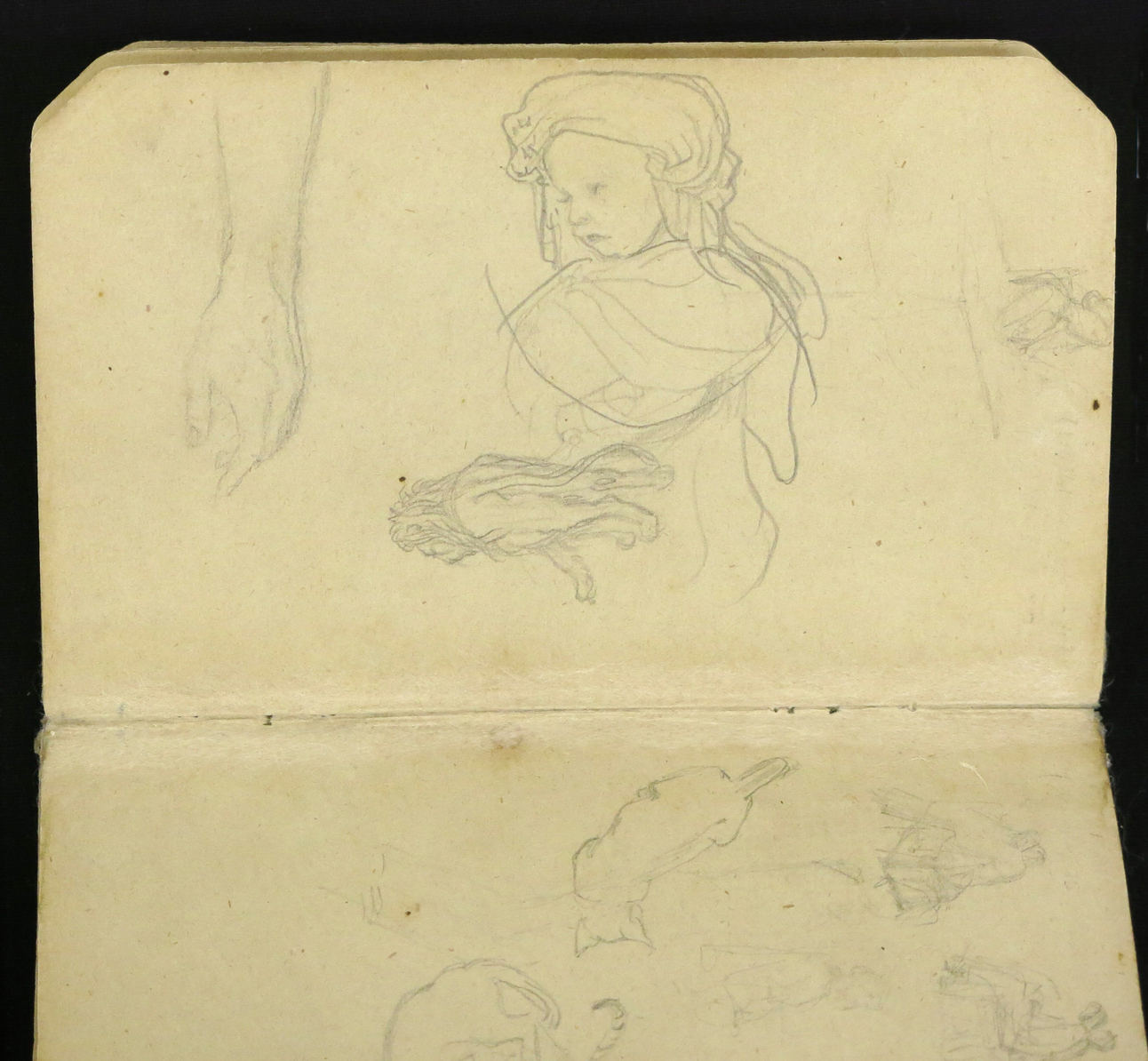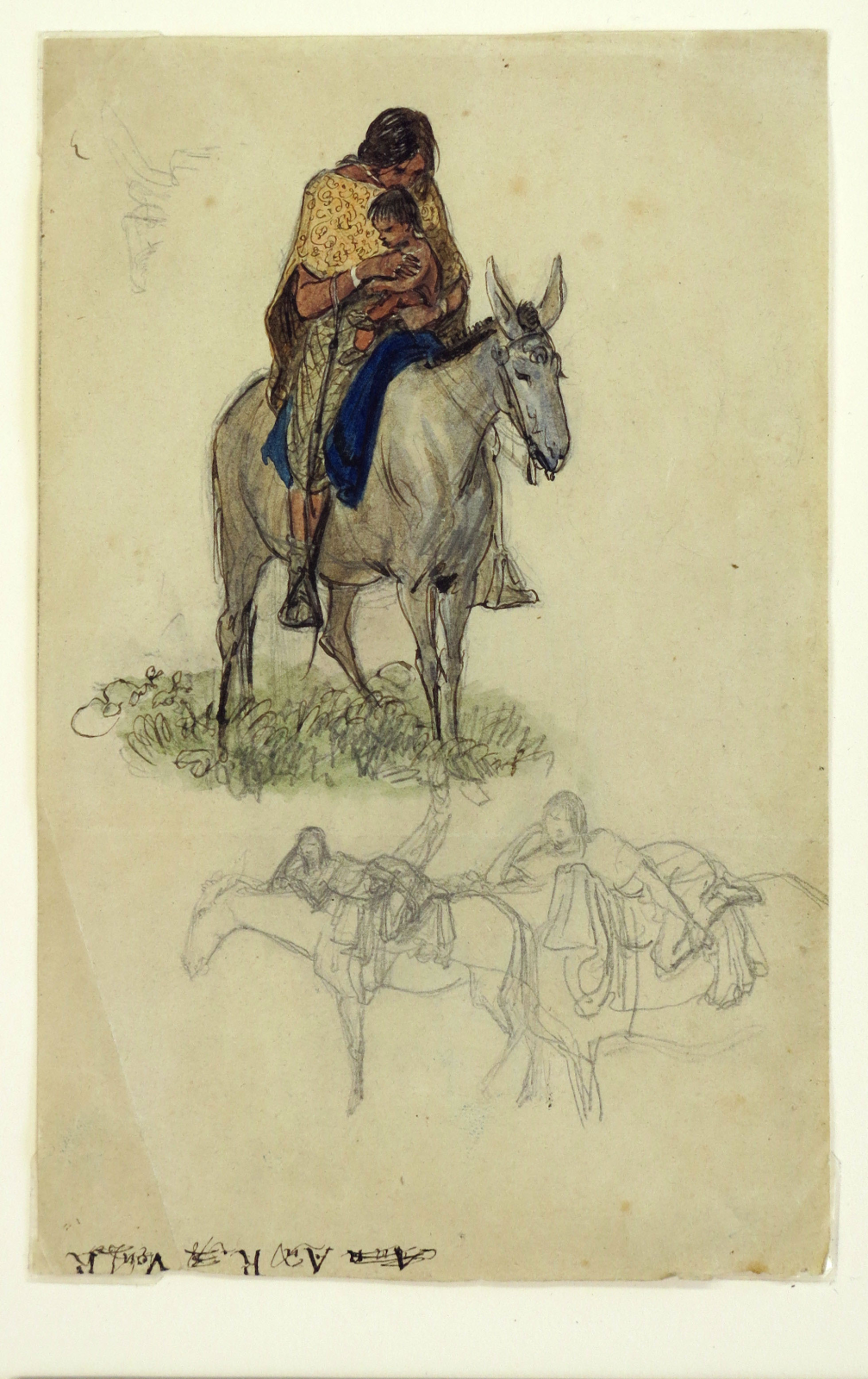Friedrich Richard Petri
Guest post by Margaret Culbertson
Today, drawing the frontier. The University of Houston presents this series about the machines that make our civilization run, and the people whose ingenuity created them.
Films and television have long shaped our vision of pioneer life on the frontier, but a tiny book of drawings from 1850's Texas gives us a far more intimate and realistic view of that world. Friedrich Richard Petri studied art in Dresden for 11 years before leaving Germany in 1851 for political reasons. He travelled with his brother-in-law, and fellow artist, Hermann Lungkwitz. A year later Petri and the Lungkwitz family reached Texas and purchased a farm about 5 miles from the small German settlement of Fredericksburg, west of Austin. Both men tried to earn extra income with their art but found few buyers. Petri produced watercolors of family, friends, and the Native Americans who lived only a few miles away. He drew these Native Americans with great humanity, including a mother embracing her child with tenderness. He also shows them at ease on their horses and mules, whether in motion or at rest. Two drawings even show a woman reclining on the back of her mule as we might lounge on a couch.

Friedrich Richard Petri. Sketches of Lion, Hand, and Child with Headdress. ca. 1851-1857. Photo Credit: Photo Credit: Texas Memorial Museum Collection, Dolph Briscoe for American History, The University f Texas at Austin, 2269-3A.
A sketchbook of Petri's, now in the Briscoe Center for American History at the University of Texas at Austin, shows us the wide range of his vision, both the life around him AND in his imagination. A mere 3 x 5 inches in size, it could be slipped in his pocket and pulled out whenever he had an idea or something caught his eye. Drawings are squeezed in wherever an unused portion of a page could be found. Careful studies for later paintings are interspersed with quick sketches of people and animals. A man on horseback chasing after escaping longhorns comes just after a ballet dancer in costume. Studies of his nephew follow a cartoon of a Greek goddess riding a winged horse to Texas. A nursing kitten precedes a page with the odd juxtaposition of a child's head, an adult's hand, and the rear end of a lion. Humor, fantasy, and theater mingle with clear-eyed depictions of farm life and poignant images of his growing niece and nephew.
Petri managed to draw in spite of periodic ill health, perhaps malaria or tuberculosis. In 1857, when suffering from a high fever, and perhaps delirious, he wandered to the river and drowned. He was only 33 years old.

Friedrich Richard Petri. Pencil Drawing with watercolor of a Plains Indian Woman and Child on a Mule. ca. 1851-1857 Photo Credit: exas Memorial Museum Collection, Dolph Briscoe for American History, The University f Texas at Austin, 2269-3A.
During his brief five years in Texas Petri observed a frontier life dramatically different from the cultured surroundings of his youth. His paintings and drawings preserved much of that new world and allow us a glimpse of the Native Americans, family, friends, animals, work, and play that enchanted his eyes and touched his heart.
I'm Margaret Culbertson from the Bayou Bend Collection, where we too are interested in the way inventive minds work.
(Theme music)
Newcomb, William W., Jr. German Artist on the Texas Frontier: Friedrich Richard Petri. Austin, TX: University of Texas Press, 1978.
McGuire, James Patrick. Hermann Lungkwitz, Romantic Landscapist on the Texas Frontier. Austin: University of Texas Press, 1983.
Images of works by Petri from the Briscoe Center and other collections can be viewed online at Bayou Bend's William J. Hill Texas Artisans and Artist's Archive. http://texasartisans.mfah.org/cdm/search/collection/p15939coll3/searchterm/petri/order/nosort]
In Austin you can make an appointment to view original works by Petri at the University of Texas at Austin's Briscoe Center for American History: http://www.cah.utexas.edu/research/visit.php
This episode was first aired on October 25, 2016